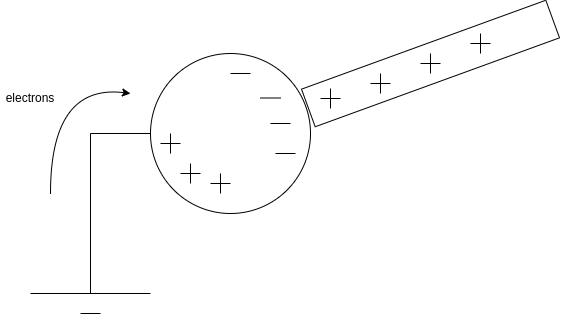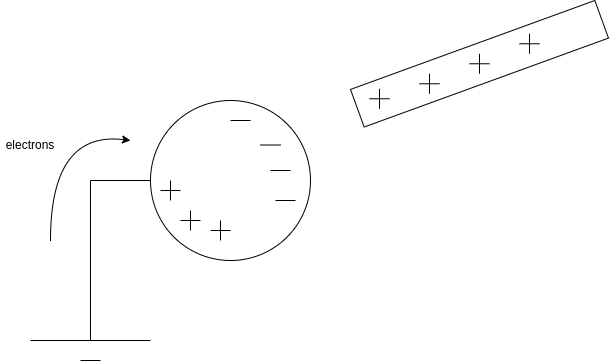Oppositely charged particles always have equal and opposite electrostatic forces.
Charge is accumulated through friction, conduction, and induction.
Friction
Friction is the tranfer of in non-metals through contact.
Conduction
Conduction is the transfer of electrons via contact between metals.
In the diagram below, the metal ball in the center is neutral at the start, but the charges separate when a positively charged metal rod touches it since the electrons flow to the positively charged rod.
After the ball-rod system is grounded, the electrons from the ground flow into the metal ball and to the rod, which neutralizes the system.

Induction
Induction is the flow of electrons remotely in metals.
Tweaking the same diagram above so that the positively charged metal rod doesn’t actually touch the ball, we can demonstrate the use of induction to negatively charge the originally neutral ball.
The proximity of the metal rod separates the charges so that the side of the metal ball opposite to the metal rod is positively charged at first.
When the metal ball is grounded, electrons flow into the metal ball, neutralizing the grounded side of the ball. Once the grounding is removed, the ball is left with a net negative charge.
